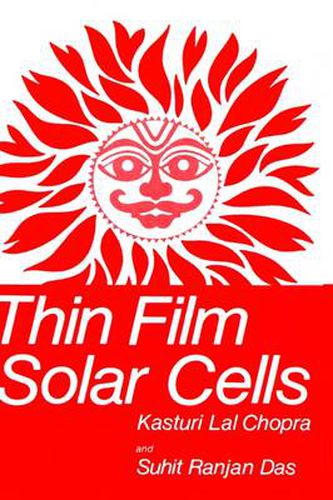Readings Newsletter
Become a Readings Member to make your shopping experience even easier.
Sign in or sign up for free!
You’re not far away from qualifying for FREE standard shipping within Australia
You’ve qualified for FREE standard shipping within Australia
The cart is loading…






This title is printed to order. This book may have been self-published. If so, we cannot guarantee the quality of the content. In the main most books will have gone through the editing process however some may not. We therefore suggest that you be aware of this before ordering this book. If in doubt check either the author or publisher’s details as we are unable to accept any returns unless they are faulty. Please contact us if you have any questions.
You, 0 Sun, are the eye of the world You are the soul of all embodied beings You are the source of all creatures You are the discipline of all engaged in work - Translated from Mahabharata 3rd Century BC Today, energy is the lifeline and status symbol of civilized societies. All nations have therefore embarked upon Research and Development pro grams of varying magnitudes to explore and effectively utilize renewable sources of energy. Albeit a low-grade energy with large temporal and spatial variations, solar energy is abundant, cheap, clean, and renewable, and thus presents a very attractive alternative source. The direct conver sion of solar energy to electricity (photovoltaic effect) via devices called solar cells has already become an established frontier area of science and technology. Born out of necessity for remote area applications, the first commercially manufactured solar cells - single-crystal silicon and thin film CdS/Cu2S - were available well over 20 years ago. Indeed, all space vehicles today are powered by silicon solar cells. But large-scale terrestrial applications of solar cells still await major breakthroughs in terms of discovering new and radical concepts in solar cell device structures, utilizing relatively more abundant, cheap, and even exotic materials, and inventing simpler and less energy intensive fabrication processes. No doubt, this extraordinary challenge in R/D has led to a virtual explosion of activities in the field of photovoltaics in the last several years.
$9.00 standard shipping within Australia
FREE standard shipping within Australia for orders over $100.00
Express & International shipping calculated at checkout
This title is printed to order. This book may have been self-published. If so, we cannot guarantee the quality of the content. In the main most books will have gone through the editing process however some may not. We therefore suggest that you be aware of this before ordering this book. If in doubt check either the author or publisher’s details as we are unable to accept any returns unless they are faulty. Please contact us if you have any questions.
You, 0 Sun, are the eye of the world You are the soul of all embodied beings You are the source of all creatures You are the discipline of all engaged in work - Translated from Mahabharata 3rd Century BC Today, energy is the lifeline and status symbol of civilized societies. All nations have therefore embarked upon Research and Development pro grams of varying magnitudes to explore and effectively utilize renewable sources of energy. Albeit a low-grade energy with large temporal and spatial variations, solar energy is abundant, cheap, clean, and renewable, and thus presents a very attractive alternative source. The direct conver sion of solar energy to electricity (photovoltaic effect) via devices called solar cells has already become an established frontier area of science and technology. Born out of necessity for remote area applications, the first commercially manufactured solar cells - single-crystal silicon and thin film CdS/Cu2S - were available well over 20 years ago. Indeed, all space vehicles today are powered by silicon solar cells. But large-scale terrestrial applications of solar cells still await major breakthroughs in terms of discovering new and radical concepts in solar cell device structures, utilizing relatively more abundant, cheap, and even exotic materials, and inventing simpler and less energy intensive fabrication processes. No doubt, this extraordinary challenge in R/D has led to a virtual explosion of activities in the field of photovoltaics in the last several years.